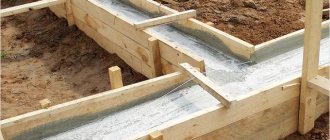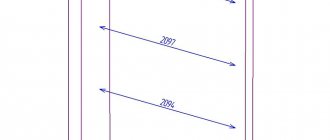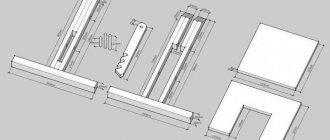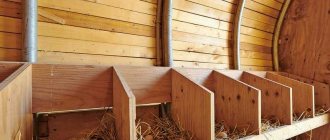Contents of the belt grinder kit Host for self-assembly
| List of the main set of working drawings for the MG-915 belt grinder OWNER. | ||
| Sheet | Name | Note |
| 1. | Common data. | |
| 2. | Belt grinder frame. | |
| 3. | Support mechanism. Retractable crossbar. The table plate is retractable for the belt grinder. | |
| 4. | Support table. Thrust plate, belt grinder ears | |
| 5. | Belt grinder drive pulley. | |
| 6. | Straight belt grinder roller 2 pcs. | |
| 7. | Roller barrel of a belt grinder. | |
| 8. | Rolling bushing for belt grinder. | |
| 9. | Threaded axle of belt grinder 4 pcs. | |
| 10. | Assembly view 1. | |
| 11. | Assembly view 2. | |
| 12. | Assembly view 3. | |
The main elements of the belt grinder (retractable crossbar, main frame and rotary mechanism) are cut from metal 10 mm thick. We recommend assembling the material of the frame and main elements of the grinder from metal with a thickness of 10-12mm; to make the structure lighter, aluminum of a similar thickness is also suitable. For this, we recommend using laser or waterjet cutting; a plasma cutter or milling machine is also suitable.
Disc or tape? And drive
There are almost more types of grinding machines used in industry than lathes. The emery known to all craftsmen - a motor with a pair of grinding wheels (or one wheel) - is also a grinder. For yourself at home, it makes sense to make either a disk end grinder (plate grinder) or a belt grinder. In the first, the abrasive is applied to a rotating hard disk; in the second - on an elastic band running around a system of pulleys and rollers. The disc type is more suitable for grinding simple wooden parts and coarse or medium clean metal parts. Using a belt grinder, it is also possible to produce precise and clean finishing of profiled parts of complex shapes, incl. large-sized, see below.
A disk grinder is very easily obtained from the same emery or a motor of suitable power, see below. You need to order an adapter from the electric motor shaft to the shank of a metal-based grinding disc. Or under a clamping chuck, then on the same motor it will be possible to build a mini lathe, see figure:
Homemade disk grinder
A worn-out “plate” is suitable: a disk made of thin (4-6 mm) fibrous plastic is glued to the edge of its side, and an abrasive is placed on it. How to make an end grinder, see next. video clip.
Video: homemade end grinder
Note: a 100-200 W drive uses a mini belt grinder (see below) for precision knife dressing, grinding/polishing jewelry, etc.
A drill or screwdriver as a grinder drive is also convenient in that it allows you to quickly change the speed of movement of the abrasive (see below) using a standard speed controller. You just need, firstly, to make a holder for the drill that rigidly fixes the tool. Secondly, an elastic transition coupling from the drill to the disk shank, because It is difficult to achieve their precise alignment without special equipment, and runout will negate the accuracy of processing and can damage the drive tool.
Drawings of a drill holder for using it as a drive for a home metal-cutting machine are given on the left in the figure:
Drawings of a drill holder for driving a grinder (grinding machine)
Since shock and irregular alternating loads on the drive in a grinder are an order of magnitude lower than, say, in a lathe, the drill holder for it can be made of hard wood, plywood, chipboard, MDF, on the right in Fig. The diameter of the mounting (large) hole is along the neck of the drill. It is highly advisable to use a drill without an impact mechanism and with a steel shell on the neck (for installing the front handle).
coupling
For the adapter coupling, you will need a piece of steel rod (not necessarily turned) of the same diameter as the shank of the grinder drive shaft, and a piece of PVC-reinforced hose (garden irrigation) with a clearance such that it stretches tightly over the rod and shank. The length of the “free” hose (between the ends of the rod and the shank in it) is 3-5 cm. The length of the protruding part of the rod should be sufficient for reliable clamping in the drill chuck. After assembling the coupling in place, the hose on the shank and rod is tightened tightly with clamps; can be wired. Such a coupling completely counteracts the misalignment of the drive and driven shaft up to 1-1.5 mm.
Read also: Drawing of jaws for a vice
Drawing of a belt grinder frame
In the absence of access to this equipment and a certain experience and perseverance, using the basic dimensions in the drawings, you can assemble a belt grinder with your own hands using an angle grinder for cutting metal and a drill for drilling holes. The easiest way to transfer grinder drawings to blanks is to print them in 1:1 format and glue them.
Consumables and parts
The only consumable material for a belt grinder is a tape (not counting grease for bearings and hinges. The tape can be ordered to the desired length (see at the end), but you can also make it yourself from textile-based emery cloth. It is highly desirable - flexible, unimpregnated. In general The procedure for making a grinder belt with your own hands is as follows:
- We cut the workpiece - a strip of the required length and width.
- We prepare a mandrel (not necessarily round) with a length along the generatrix slightly less than the length of the tape.
- We outline the mandrel with the workpiece inside out.
- We bring the ends of the workpiece exactly end to end and securely fasten them.
- Place a piece of glue stick for a hot glue gun on the joint.
- Heat with a construction hairdryer until the glue melts.
- We apply a patch of thin fabric to the joint.
- Press with something hard through the Teflon film until the glue hardens.
There are three significant points here. The first is to use a rough PET film with a thickness of 25-50 microns (sold) instead of fabric for the patch. It is very durable, but just try running your finger across a PET bottle. Not very slippery? Rough PET film cannot be stretched under tension even over polished metal. And instead of a patch, it is better to seal the back of the tape with a continuous strip of PET film with an overlap of 2-3 cm. The runout of the tape will be no more than 0.05-0.1 mm. This is less than from the thinnest calico and even less than the error in the thickness of the blank skin.
Second, insert the finished tape into the machine and grind something indecent with it without strong pressure. The scar on the seam will be sealed, and the tape will become no worse than the branded one.
But the most important thing is that in terms of elasticity, the best adhesive for gluing grinder tape is not expensive and difficult to use, thermal or assembly, but ordinary PVA. If the tape is covered with a lining along the entire length of the back, then its PVA strength will be more than enough. How to glue PVA grinder tape, see video
Video: gluing grinder tape with PVA glue
Pulley
The generatrix (side surface in cross-section) of the grinder drive pulley must be straight. If you use a barrel pulley, the belt will bend like a trough along its entire length. The rollers prevent it from slipping, see below, but the generatrix of the pulley must be straight.
A pulley for a grinder that is not intended for particularly precise work, firstly, does not have to be turned. In a scheme with 3 rocker arms, the beating of the belt from its misalignment will go out on the rollers before it reaches the working branch. In a simple vertical grinder, the beating of the belt will be sufficiently damped by the tension spring. Therefore, it is quite possible to make a pulley for a grinder without a machine, see video:
Video: drive wheel on a grinder without a lathe
Secondly, the pulley, rollers and, in general, all the parts of a home grinder can be made from plywood. In production, this is certainly not an option, even if a plywood grinder is offered for free with an additional payment: the grinder needs a salary, and the wooden grinder in the workshop will completely wear out before it pays for it and itself. But you won’t be running a grinder at home every day in 3 shifts. And no tape slips along the plywood pulley. Incl. homemade. So you can safely make a grinder pulley from plywood:
Video: pulley for grinder made of plywood
It is much more important to correctly calculate the diameter of the pulley based on the engine speed and the required belt speed. A running belt that is too slow will tear the material being processed; too fast - it will erase itself without really processing anything. In which case, what tape speed is needed is a separate conversation, and a very difficult one. In general, the finer the abrasive and harder the material being processed, the faster the belt should move. How the belt speed depends on the diameter of the pulley and motor speed, see figure:
Table for calculating the speed of the grinder belt based on the diameter of the pulley and motor speed
Fortunately, for most abrasive-material pairs, the permissible belt speed limits are quite wide, so choosing a pulley for the grinder can be easier:
Video: what wheel is needed for a belt grinder
Rollers
The rollers of the grinder, oddly enough at first glance, are its most important parts. It is the rollers that keep the tape from slipping and ensure its uniform tension across the width. Moreover, there can be only one video in kinematics, see, for example, the video above about the grinder for incisors. Only barrel rollers can cope with this task, see below. But the “trough” of the belt after any roller must straighten before it reaches the working area.
Rollers with flanges (sides, edges) will not hold the tape. The issue here is not only and not so much with the misalignment of the roller axes: the grinder belt, unlike the drive belt, must withstand the loads from the parts being processed without slipping. If you make videos with flanges, then if you barely touch the tape with something, it will creep onto the flange. In the grinder you need to use Type 3 barrel rollers (highlighted in red on the left in the figure).
What should the grinder videos be like?
The dimensions of Type 3 rollers are also given there. It is advisable to take the diameter of the rollers no more than 0.5 of the width of the tape (so that the “trough” does not go far), but not less than 20 mm for turned steel and not less than 35-40 mm for plywood. The tension roller (the probability of the tape slipping from it is greatest), if the working branch of the tape does not come off it, can have a diameter of 0.7-1.2 its width. Plywood rollers are made in the form of a thick shell into which the bearing is pressed; then the roller is mounted on the axle (in the center in the figure) and processed cleanly, see e.g. track. video:
Video: barrel roller for grinder
Not every turner can turn a profile roller barrel exactly according to GOST even on a machine. Meanwhile, there is a way to make videos for the grinder without significant difficulties. The same PVC-reinforced garden hose will help out, on the right in Fig. previously. A section of it is pulled tightly onto a roller blank with a straight generatrix and cut off with a margin along the edges to the thickness of the hose wall. The result is a roller with a complex profile of the generatrix, which holds the tape even better and gives it a smaller “trough”. Don't believe me? Try to get to an airplane or missile graveyard and dig around in them. You will find rollers with exactly the same generatrix profile. It’s just that mass production of complex profile rollers is much more expensive than Type 3 barrels.
Drawing of the crossbar and frame of the belt grinder
The material of the belt tensioner mechanism for the grinder is made of 8 mm thick steel. To assemble this unit, you will need M6x1 taps, holes with a diameter of 5.2 mm, in the drawing for a 6x1 thread. We recommend lubricating the rubbing elements with any available technical lubricant. For further stable operation of the grinder belt tensioner, it is recommended to lubricate it regularly.
Drawing of the belt grinder tensioner
The support table and thrust platform of the Host belt grinder are made of 6 mm thick steel using welding and subsequent grinding of the seams. You will also need an M8x1.2 tap; the holes for this thread are marked with a diameter of 6.8 mm. As a thrust element of the grinder, we recommend using porcelain tiles; they have proven themselves better than high-alloy steel or cast iron, because... its density and durability are higher.
Drill-based trash grinder
Hello everyone, today we will talk about the irreplaceable device grinder. Many who have a creative hobby are faced with the fact that something needs to be polished; there are many devices for these purposes, but a grinder is the best option. But what to do if it is not there and, as in my case, there is not even the opportunity or means, there is only one way out - to do it yourself.
And so I immediately apologize for my welding skills, I don’t really like to weld galvanize, but I made from what I had, from pieces without spending a penny, just a man’s watch. And so we need two pieces of tube in my case, an oval of 30 cm each
You can adjust all sizes to suit yourself, and you need two 10cm tubes
And so, we assemble a rectangular shape from the tubes and weld it at low currents due to the thinness of the material. I flatten the edges of the short ones a little for a more even fit.
This is how I flatten the edges of the shorties
Now I’m welding it somehow with Russian obscenities
That's it, the frame is ready, now I'm starting to stand. For the stand I took a 20cm oval, but with a male connector, for ease of disassembly
Next, I step back from the edge and make two cuts at intervals equal to the thickness of the tube.
Now I bend everything inward
after bending, the metal extends beyond the edges of the tube, now it will be easier to cut off the excess. I cut off the metal from the sides
I bend the tubes at an angle, trim the angle so that there are no distortions
Something like this, now I thoroughly weld all the joints
After welding, I let myself and the metal cool a little.
Trying everything in place General view
Now we proceed to attach the third roller. For the third video I take two 10cm corners
To make it easier, I make the slots with a grinder and drill them with an 8mm drill
I cut everything through with a grinder and straighten the slot. In the photo before leveling I drill at a distance of 10cm from the edge
I put everything in place, drill a hole for attaching the third roller
I weld another jumper and two bearings on the inside near the hole
Well, now I’m starting to make the videos. For them we need 6 bearings 20x6 mm and 3 tubes with an internal diameter of 20 mm
I press the bearings into the tubes and wrap them with electrical tape, so you can tighten the hose. On the third roller I weld the bearings from the inside so that it doesn’t spin
I drill all the holes for the rollers and install everything in place. I put the third roller in place, thread the pin and counter it
Well, I'm trying the drill in place
All that remains is to install the tape and work. Unfortunately, I don’t have the tape, I had to chemitize it and install what I found. The first launch, there was a little runout, but there were no problems adjusting with studs. That's all, friends, don't judge strictly for welding skills and beauty. The main thing is that it works without investment.
Well, once again we have made a working assistant out of trash, good luck to everyone!
Become the author of the site, publish your own articles, descriptions of homemade products and pay for the text. Read more here.
Drawing of a table for a belt grinder
It is best to entrust turning work to an experienced turner, because... The rollers and pulley of the belt grinder are high-precision parts, difficult to manufacture and require the use of turning equipment and various types of cutters, as well as a band saw for cutting workpieces. This is the main element of stable operation, smooth running of the grinder belt and safe operation of your machine. All dimensions and tolerances of grinder rollers are indicated in the following drawings.
Tape is still better
A belt grinder allows you to do everything a disk grinder can do, and much more. Therefore, next we will focus on how to make a belt sanding machine with your own hands. Amateurs, focusing on industrial designs, sometimes make very intricate grinders, see figure:
Homemade belt sanders
And this is justified: the design and kinematics of the belt grinder are very flexible, which makes it possible to successfully use scrap materials and old scrap metal. You just need to follow 3 principles:
- Do not do as in the second photo from the left: the abrasive side of the tape should only touch the workpiece. Otherwise, the abrasive will eat both the guide rollers and itself. The accuracy and cleanliness of processing during one work operation will be unpredictable;
- The design of the machine must ensure uniform tension of the belt, regardless of the nature of the operation performed;
- The speed of the belt must correspond to the nature of the operation being performed.
Kinematics and design
As mentioned above, there are many designs of grinders. When considering what and how to build a grinder for yourself, it is better to focus on industrial designs designed to be fully mechanized for precise and clean grinding of large-sized profiled parts: once it “sands” the blade of an airplane propeller or wind turbine properly, it can handle any other work.
Kinematic diagrams of grinders for the specified purpose are shown in Fig.:
Basic kinematic diagrams of belt grinding machines (grinders)
Pos. A is the most complex and perfect, with three rocker arms. If the length of the tension roller rocker arm is approx. 2 times less than the working one, then by adjusting the tension of the springs, it is possible to achieve uniform tension of the tape when the working rocker moves 20-30 degrees up and down. By tilting the bypass rocker, firstly, the machine is reconfigured for belts of different lengths. Secondly, in the same way you can quickly change the belt tension for different operations. The working branch of the belt can be any, except for the one running from the drive pulley to the tension roller, i.e. A grinder with 3 rocker arms is both horizontal and vertical.
The scheme with a coaxially swinging rocker arm (item 2) is simpler, cheaper and in terms of processing accuracy is not inferior to the previous one, if the length of the rocker arm between the axes is at least 3 diameters of the workpiece. To reduce the profile by grinding, the stroke of the rocker arm is limited by stops within 10 degrees up and down. The pressure of the belt to the part is most often gravitational, under the weight of a rocker arm with a bypass pulley. The tension of the belt can be quickly changed within certain limits by pulling the rocker up with a weak adjustable spring, partly compensating for its heaviness. The grinder of this design can work as a grinder for small parts from a sliding table. In this case, the rocker arm is rigidly fixed horizontally, and the working surface of the belt will run around the bypass pulley. For example, the fairly popular BTS50 grinder is made using a coaxial rocker design. The disadvantages of the scheme are, firstly, the technologically complex rocker arm joint, which is coaxial with the drive shaft. Secondly, the need for an elastic band: if you make the idler pulley sliding and spring-loaded, the processing accuracy decreases. This drawback when processing small parts is completely eliminated by an additional tension roller, see below.
The scheme with one misaligned rocker arm is used quite rarely in industry, because in principle, it does not allow achieving uniform tape tension. However, it gives accuracy that is quite sufficient at home and allows you to build a very good simple grinder.
What's good for what?
Now let's see what is possible to “squeeze” out of this or that circuit from the point of view of an amateur master. And then we’ll try to figure out how to make a grinder belt ourselves and do without custom-made turned parts.
3 rocker arms
Competent amateurs build their grinders exactly according to the scheme with 3 rocker arms, on the left in Fig. below. Not all propeller blades can be ground, but in this case another advantage of this scheme applies: if the grinder is used as a vertical grinder, then the working branch of the belt is elastic. This allows a skilled craftsman, for example, to guide cutting edges and blades with literally micron precision.
Homemade and industrial-made tape grinders
In industrial grinders for home use, the 3-rocker design is also widely used (in the center) for the same reasons. Repeating them yourself in most cases is quite possible. For example, the drawings of the KMG grinder, popular abroad, can be downloaded from the link.
The dimensions are, however, inch - the machine is American. For the drive, in any case, it is possible to use an angle drill-grinder (on the right in the figure, quite suitable in terms of power) with a homemade pulley and rollers, see below.
Note: if you are making a stationary drive, try to get an asynchronous motor at 2-3 speeds from an unusable washing machine with a horizontal tank. Its advantage is low speed. This makes it possible to make a large-diameter drive pulley and thereby eliminate belt slippage. A belt slip during operation is almost certainly a damaged part. Most washing machines with 2-3 speed asynchronous motors for 220 V are Spanish. Shaft power – 600-1000 W. If you come across one, don't forget about the standard phase-shifting capacitor bank.
Coaxial rocker
Amateurs do not make pure grinders with a coaxial rocker arm. A coaxial hinge is a complicated thing; you can’t make an elastic band yourself, and store-bought ones are expensive. Grinders with a coaxial rocker are most often used at home in the version for small precision work from a table, i.e. with a rigidly fixed horizontal rocker arm. But then the need for a rocker arm as such disappears.
An example is a mini grinder, the drawings of which are given in the figure:
Drawings of a mini-grinder for small precision work
Its features are, firstly, an overhead bed for the tape (item 7), which significantly expands the possibilities of use. For example, the plane iron is straightened on this grinder with an angular stop literally by itself. In this case, the grinder works, so to speak, like a self-propelled whetstone (emery block). Having removed the bed, we get a grinder with an elastic band for precise grinding/polishing of rounded small parts. Secondly, the tension shaft (item 12). By clamping it to the groove with nuts, we get a relatively fixed tension of the tape for working with the bed. And after releasing the nuts, we switch the grinder to the gravitational belt tension mode for fine work. Drive - not necessarily through a pulley (pos. 11). You can screw it directly onto the drive shaft shank (item 16) from the drill through the adapter coupling, see above.
A specialized tool grinder (for example, for guiding and straightening turning tools) generally loses any semblance of the original design. A high-speed motor is used for it (200-300 W is enough power). The drive pulley is, accordingly, of small diameter. The bypass pulley, on the contrary, is made larger and heavier for inertia. All this together helps reduce tape runout. The tension roller for the same purpose, plus for greater uniformity of belt tension, is moved further away and spring-loaded with a long, not very strong spring. How to make a grinder for processing incisors, see the video below.
Video: grinder for making cutters
One rocker
In amateur practice, grinders with a misaligned rocker arm are good because they do not require precise parts at all. For example, hinges can be made from card loops. At the same time, the processing accuracy remains sufficient for ordinary amateur requests.
In this case, the original scheme is also modified: the rocker arm is turned 90 degrees, moved up and spring-loaded, on the left in Fig. It turns out to be a simple vertical grinder. And, importantly, it works without problems with homemade non-stretchable tape. A tension spring (in the center) or a compression spring can provide tension to the tape. Its strength is not so important, as long as the tape does not bend excessively during operation. No adjustments are required during use.
How a simple vertical grinder works
Drawing of the belt grinder tensioner bushing Owner
To assemble the grinder rollers, you will need 6000RS bearings, 6 pcs. In case of imprecise turning, I recommend gluing them onto thread sealant, this will allow them to last longer and avoid unpleasant situations with collapsed rollers. We use CNC turning on our machines, which allows us to produce parts with an accuracy of .01 millimeters.
For a better understanding of assembling a belt grinder with your own hands, below we attach assembly drawings and views of the assembled grinder.
How to make a grinder with your own hands: assembly rules
Before you start independently constructing a grinding unit of this type, you must carefully study the sequence of actions and also take into account some rules. The first and most important step is preparing to assemble the grinder. Let's consider what actions this item includes.
A drawing with the dimensions of the grinder is an important document on which the performance and technical characteristics of the unit will depend
The first step is to draw up a suitable drawing. It should be remembered that the circuit must correspond to specific operating conditions. You can draw up the drawing yourself. The second option is to download the finished circuit from the Internet. On specialized websites and forums you can find many modifications of such devices, the design of which is most suitable for home assembly.
The more detailed the drawing, the better. The diagram must contain a detailed description of all individual structural elements with their dimensions. A drawing with dimensions is a very important document on which the performance and technical characteristics of the future machine will depend. Therefore, it is worth approaching its preparation with all seriousness.
You can make different versions of grinding grinders yourself. In addition to stationary devices, there are also simpler types (for example, a do-it-yourself grinder made from an angle grinder). A drawing and video for assembling such a device can also be easily found on the World Wide Web.
The next point worth considering is preparing all the necessary parts and tools for assembling the unit. To construct a grinder at home, you will need the following equipment:
- jigsaw;
In order to make a grinder, you need to understand the principle of operation of the machine
- drill;
- Bulgarian.
Note! When selecting tools, it is necessary to take into account that the design of the grinder involves the use of metal parts, as well as their processing.
Many parts of this grinding equipment are difficult to make for a beginner. Therefore, it is recommended to study in detail the various structural elements and their features. It also wouldn’t hurt to look at the drawings and videos. Making a grinder with your own hands is much easier if you have the opportunity to consult with a qualified craftsman who can give valuable recommendations on this issue.
Some structural elements cannot be created with your own hands without the use of turning equipment. You don't have to do this kind of work yourself. To perform complex parts, you can use the services of a professional turner.
When making a grinder with your own hands, it is advisable to take into account one more important point. The most effective are devices that can be used to process not only horizontal, but also vertical surfaces. Experts recommend choosing a drawing that allows you to grind workpieces at different angles.
You can make different types of grinding grinders with your own hands.
Do-it-yourself grinder: drawings with dimensions of structural elements
The development of an appropriate scheme is the most important preparatory stage. The drawing can be ordered from a qualified craftsman. In this case, it will be as accurate as possible and will allow us to produce equipment that will last for many years.
How to make a grinder with your own hands? Drawings, videos, as well as photos of grinders at various stages of assembly - all this makes it possible to independently produce a high-quality unit.
The second option is to download the diagram from the World Wide Web. In this case, it is worth knowing that some drawings located on the Internet are not effective. Therefore, before downloading this or that diagram, it is recommended to read the reviews of real people who have already used it to assemble belt grinding equipment.
It is also recommended to compare the diagram drawn up yourself with other drawings with the dimensions of the grinder yourself. Videos with relevant topics allow you to quickly understand all the nuances of manufacturing such a unit. There are a huge number of them on the Internet.
In order for the machine to serve for a long time, you need to order a drawing of the grinder from a qualified craftsman
The diagram must be accurate and contain sketches of all structural elements of the structure. The dimensions of individual parts must be indicated. And finally, you can post the finished diagram on a specialized forum and ask what inaccuracies it contains. It is possible that in this case it will be possible to obtain valuable advice on its improvement.
Do-it-yourself homemade grinder machine: choosing a suitable drive
Before you begin assembling such a grinding unit, you need to prepare a suitable motor. Most often, a drive with a power of at least 1 kW is used for these purposes. There are several factors to consider when choosing an engine. Let's look at them in more detail.
First of all, you need to understand that devices that operate on a standard network are suitable for use at home. The voltage in such a network is traditionally 220 V. Higher voltage is necessary for the use of professional equipment, which is found in small enterprises, but not for a home-made device. The grinder grinder must be created in accordance with a pre-prepared drawing.
Another important point is the number of drive revolutions. The accuracy of workpiece processing depends on this parameter. A certain pattern can be traced here. The higher the engine power, the more revolutions it can produce.
For a grinder, a drive with a power of at least 1 kW is most often used
The most suitable drive option includes special blades in its design. Their function is to neutralize overheating that occurs during engine operation. It is easy to make such a device yourself in a home workshop.
Most often, a simple motor from a washing machine is used to assemble such grinding equipment. A do-it-yourself grinder of this type fully meets all operational requirements and is used for processing small workpieces made of metal, wood, and plastic.
Features of making a grinder from a washing machine with your own hands
The engine power is selected depending on the size of other structural elements. First of all, this concerns the dimensions of the main (drive) pulley. If the size of this element is the standard 150 mm, then you need an engine with power that can produce up to 3000 rpm.
Of course, you can purchase a ready-made engine, but this will cost extra money. The best option for assembly at home is to use an unnecessary motor from a washing machine. The grinder, which is based on such a device, is certainly not able to compare with the factory one, but it is quite suitable for simple everyday work.
To make a grinder, you can use a regular commutator motor from an old washing machine
The motor, removed from an old automatic washing machine, has low power (below 300 W). It is distinguished by good reliability and is unpretentious in operation. The popularity of using just such a drive is due to its wide distribution.
Related article:
Belt grinder: a simple device for grinding and sharpening
Advantages and disadvantages. Types of grinders. Design and principle of operation. Recommendations for the selection and use of a belt sanding unit.
The drive from the washing machine must be included in the preliminary drawing. A do-it-yourself grinder at home requires a motor with an output shaft. In this case, the shaft has a threaded connection, the design of which allows it to be connected to the pulley without much difficulty.
Note! For assembling grinding units, engines not only from old automatic machines are suitable, but also new generation drives. When using devices of the second type, you must remember that they need a device that will regulate the speed. This is due to the fact that the maximum rotation speed of such drives can reach up to 18 thousand rpm.
New generation drives have one significant drawback. With the active use of grinding equipment, quite rapid wear of the motor brushes occurs.
The grinder, which is based on a motor from a washing machine, cannot compare with the factory unit
When constructing a grinder with your own hands from a washing machine engine, you must also take into account that such a drive is best suited for a small unit. Therefore, it is worth choosing in advance the optimal dimensions of the leading and secondary rollers.
Making grinder rollers with your own hands: drawings
Designing rollers for a grinding unit of this type is a serious step that requires care and precision. One of the most important elements of a grinder is the main skating rink. It must be remembered that its dimensions must be larger than the dimensions of the remaining rollers.
It is no coincidence that the leading roller has similar geometric parameters. Such dimensions allow you to avoid unwanted jerk that occurs during the starting moment. It is also important to understand that for the manufacture of this structural element, in no case should you use materials that have a large mass. Such materials include:
- steel;
- cast iron.
Before you start creating the rollers, you need to prepare the appropriate drawings with dimensions. A do-it-yourself belt grinder should have light and convenient rollers of small dimensions. As a rule, this is quite enough to carry out simple sanding work.
When assembling the grinder yourself, it is important to place the rollers perpendicular to each other to avoid belt distortions
To reduce the weight of the drive roller, a steel part with a cavity can be designed. There are special reference books that allow you to carry out the calculations necessary for this procedure.
The second option, which is most often used by home craftsmen, is the use of duralumin. This material is lightweight and ideal for this purpose. It contains impurities of copper and magnesium, which provide increased strength to the alloy. To assemble the grinder, it is customary to use duralumin grade D16 and higher.
How to make grinder rollers with your own hands? Experts recommend making a groove on the pulley located at the end. Its dimensions are selected taking into account the size of the abrasive belt that will be used in the machine. This measure is aimed at preventing the tape from falling off during equipment operation. It is advisable to do the same manipulation with the remaining rollers.
The degree of roughness of the rollers is very important. The surface of the rollers may have different levels of roughness. When assembling a grinder, it is recommended to use rollers in which this indicator ranges from 1.25 to 2.5. A table containing information on the degree of roughness of parts can be easily found on the Internet. The pulley for the grinder is mounted on the equipment with your own hands using bearing units.
Duralumin is often used to make grinder rollers.
In this case, closed type bearings are used, which have a static outer ring and are classified as self-aligning. Installing such elements eliminates the possibility of abrasive or any other foreign particles getting onto the roller shaft.
When choosing bearings, it is necessary to take into account their load-bearing parameters. These indicators determine how much load the part can withstand. The higher the unit speed, the more reliable the bearings should be. During work, it is not recommended to deviate from the dimensional drawings. A belt grinder made in accordance with the scheme will be characterized by higher efficiency, as well as a long service life.
How to fix the video in the device? The easiest way to secure the roller at home is to use standard cotter pins. Another fastening option is to use a collar (at one end of the axle).
Assembly drawings of a belt grinder
Assembly drawing of a belt grinder (View 1)
Assembly drawing of a belt grinder (view 3)
Assembly drawing of a belt grinder (view 2)
All the fasteners used for assembling the belt grinder with your own hands are laid out in the specification file.
Specification of fasteners for the drawing of the belt grinder
Thank you for reading this material, we are posting a link to the drawings of the “Host” tape grinder in vector format for printing in good quality as a separate file
Belt grinder drawings in dwg format with dimensions
Send us your suggestions, questions and wishes by email, we will be happy to discuss or help with any questions you may have.
Call, write!











